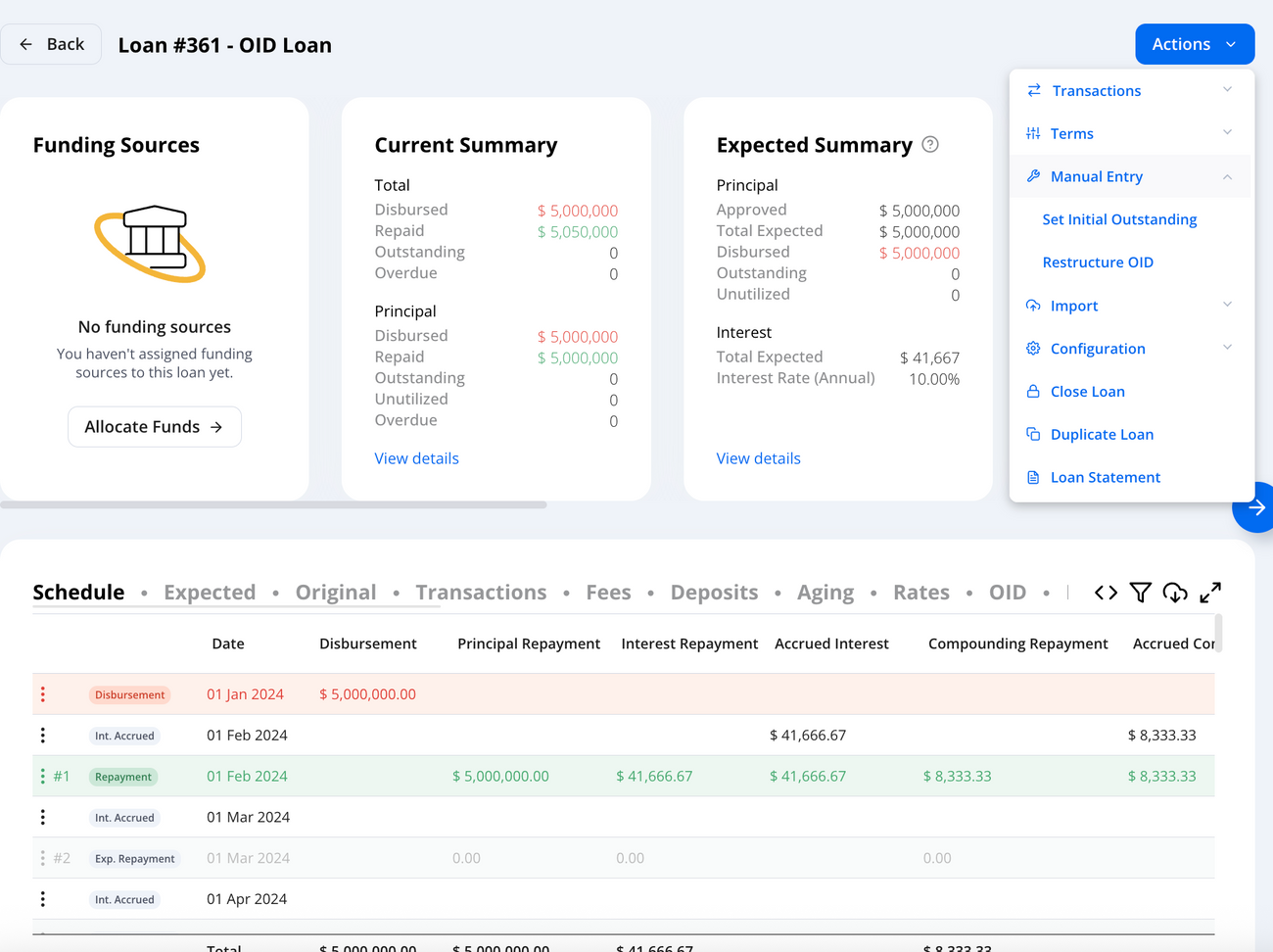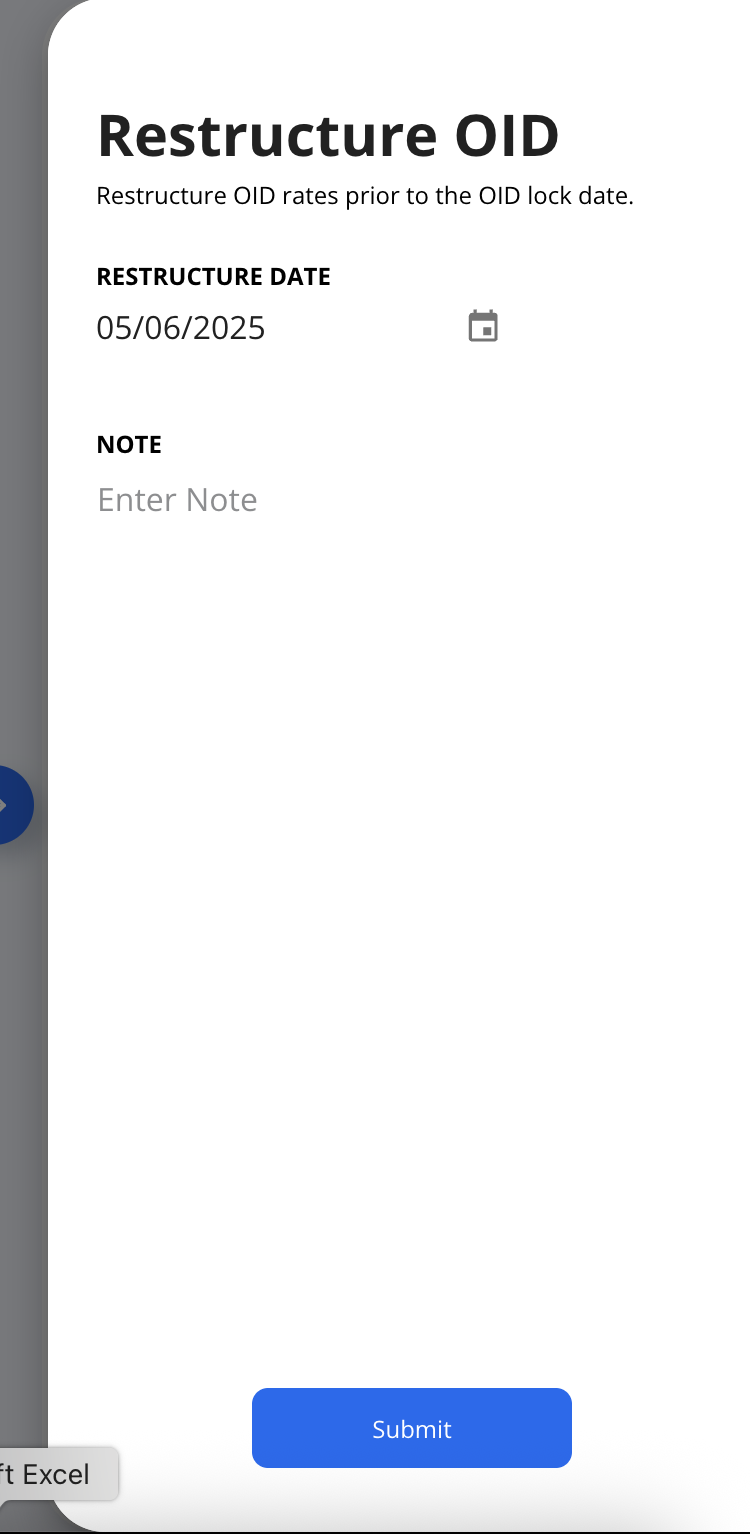OID & Effective Interest Rate Guide
Last updated June 5, 2025
A comprehensive guide to understanding and managing OID (Original Issue Discount), Effective Interest Rate (EIR), Restructure scenarios, and troubleshooting tips in Hypercore.
1. What is OID?
Original Issue Discount (OID) represents the difference between the initial loan amount received by the borrower and the face value to be repaid at maturity.
This discount is amortized over time and contributes to the Effective Interest Rate (EIR) — the true cost of the loan, including fees and discounts.
In Hypercore, the system automatically calculates:
- Discount rate – Derived from the loan’s cash flow structure.
- OID cost – The total discount amount to be amortized over the loan’s life.
- OID interest – The portion of OID amortized as income/expense in each period.
- OID remaining cost – The unamortized balance of the OID.

2. What is Effective Interest Rate (EIR)?
The Effective Interest Rate is the actual annual rate of return (or cost) on a loan, taking into account the timing and amount of all related cash flows, fees, and discounts. It often differs from the stated interest rate because it reflects the true economics of the transaction.
3. Locking OID Values
Hypercore includes a Lock Date feature that freezes OID calculations up to a certain date to protect reporting accuracy.
- Default behavior: OID values are automatically locked for a configurable number of days (based on client preference), depending on the account's configuration. This is defined in the Lock Date field under the loan’s general settings.
- Manual change: You can update the Lock Date field manually if you wish to freeze calculations through a different cutoff date.

💡 Locking is based on financial reporting best practices and ensures that past values used in finalized reports remain unchanged, even if loan terms are later adjusted.
Note: Even if a lock is in place, you can still use the OID Restructure feature (see next section) to apply updated calculations from a designated Restructure Date forward. This allows for forward-looking accuracy while preserving past reporting.
4. OID Restructure Feature
What It Does
When historical loan data has changed (e.g., due to amendments, rate changes, or fee adjustments), OID calculations may become inaccurate.
OID Restructure recalculates OID values according to the current loan structure, treating the present terms as if they had always been in effect. The calculation also incorporates previous cash flow data.
When to Use It
Use the Restructure feature when you want to allow the system to override previously locked OID values. This is particularly useful in scenarios where loan data wasn’t updated in a timely manner - for example, if the user continued managing loans outside of Hypercore (e.g., in Excel) and only later imported or updated the loan data in the system.
While changes such as interest rate updates, OID component edits, or historical uploads may prompt recalculations, a restructure is not always required for those actions unless the goal is to retroactively reflect them in locked period.
How It Works
- Actions > Manual Entry > Restructure OID

- Set the Restructure Date, which determines when the system will begin recalculating OID based on previous changes

- The system recalculates:
- OID cost
- OID interest
- OID remaining cost
- These recalculated values apply from the restructure date forward, ensuring consistency in future amortization.
Implications
- Ensures accurate financial reporting
- Maintains EIR consistency despite changes
- Automates recalculations instead of requiring manual entries
- Works independently of the Lock Date, so even if OID values are locked, a restructure will still recalculate forward from the specified restructure date

